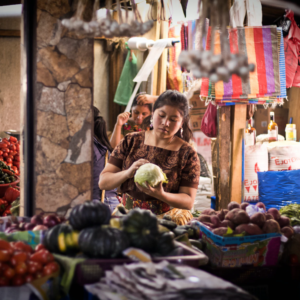Guatemala offers multiple investment opportunities. According to Lisa Juan José Gutiérrez Mayorga alongside the Guatemalan Chamber of Commerce explain the main reasons to invest in the country.
Geography
The country of Guatemala is located on the isthmus of Central America. On this surface, the geological formations, relief, climate and soils combine to form a great ecological diversity with distinctive and unique characteristics.
Spanish is the official language of Guatemala. However, there are 23 Mayan languages, which are part of the country’s cultural heritage. Its privileged geographical location, which borders both the Atlantic and Pacific coasts and its proximity to the member countries of the North American Free Trade Agreement – NAFTA – (for its acronym in English), have allowed Guatemala to become a strategic nation for international trade. Therefore the geography sector is great for investment.
Invest in land and Resources
Its land borders to the west and north by Mexico, to the southeast by Honduras and El Salvador, to the south by the Pacific Ocean, and to the east by Belize and the Gulf of Honduras. Its total area is 108,889 square kilometers (42,042 square miles). It is one of the largest nations to invest in the Central American region.
Economy
Guatemala, with a population of approximately 12 million inhabitants, has the largest economy in Central America, contributing ⅓ to the regional GDP. The sectors that contribute the highest percentage to GDP are commerce with 25%, and agriculture, forestry, hunting and fishing with 22%.
The latter contributes ⅔ of exports and ½ of the labor force, and its main products are coffee, corn, sugar cane, fruits, vegetables, meat and poultry products. The participation of the industrial sector is 12%, its most important products being food and beverages, textiles, footwear, clothing and the manufacture of metal products.
Since 1996, Guatemala’s inflation rate has been below regional averages for Latin America. From 2000 to 2004, the percentage rate of inflation has varied between 5.08% and 9.23%. For the year 2007 it was estimated at 8.75%.
As far as the external sector is concerned, despite posting a current account deficit, there has been a considerable increase in international monetary reserves as a result of significant capital inflows from abroad.
In recent years, the fiscal deficit as a ratio of GDP has remained at relatively low levels, between 1.0% and 1.9.
Exports: The value of FOB exports is approximately US$8,028 billion, with the main export products being agricultural such as coffee, sugar, bananas, and clothing products, among other diverse manufactures. Guatemala’s main export markets are: the United States (52.5%), Central America (25.5%) and Mexico with 4.14%.
Regarding imports, the main import products are textile materials and their manufactures with 17.2%, mineral products (12%), chemical industry products (12.2%) and the main import partners are the United States (38.7%) , Central America (9.9%) and Mexico (7.0%).
The main foreign exchange generators are exports with 44%, transfers and donations with 40% and tourism with 11%.
Market access
In order to expand access to international markets for Guatemalan products and actively integrate into the globalization process, Guatemala has negotiated several free trade agreements in recent years, such as:
- Central American Economic Integration Treaty,
- Free Trade Agreement Mexico – Northern Triangle (Guatemala, El Salvador and Honduras),
- Free Trade Agreement Guatemala – Taiwan,
- Free Trade Agreement Dominican Republic – Central America – United States,
- Guatemala-Panama Free Trade Agreement
- Partial Scope Agreement Guatemala – Cuba,
- Partial Scope Agreement Guatemala – Colombia,
- Partial Scope Agreement Guatemala – Venezuela,
- Guatemala – Belize Partial Scope Agreement.
- The Association Agreement between the Central American countries and the European Union is under negotiation.
Invest in infrastructure
Guatemala has the most modern infrastructure in Central America; its highway network has an extension of 14,000 km. There are 2 main ports, Santo Tomás de Castilla in the Atlantic Ocean and Puerto Quetzal in the Pacific Ocean.
Located in the center of the city, La Aurora International Airport operates daily and direct flights to the main destinations around the world. This airport handles 93% of the country’s passengers and air cargo. All courier and cargo services, both refrigerated and normal, are provided by important and recognized companies worldwide.
Likewise, during the last decade, the processes of modernization and privatization of many of the basic services, especially in the areas of electricity and telecommunications, have allowed a greater offer of modern and high-quality services, facilitating the production and distribution of any product, as well as the development of new businesses that have the most advanced technology at an international level.




